Late last week Oura launched a new integration with the Apple Watch, adding both an app to display data as well as data fields that can be used in watch faces. While other display-less companies like Whoop have resisted integrations with other wearables, I’d argue that Oura’s integration here is simple and brilliant. Albeit, still a bit rough around the edges. But, definitely a smart direction for the company. For those not familiar, Oura makes smart rings that track your sleep metrics as well as daily & workout metrics. It gets 4-5 days of battery life in between charges.
For Oura users, you likely got a pop-up notification late last week that noted the new integration, which is pretty much automatically installed for iOS users to your Apple Watch. Perhaps there were some permissions I had previously given, but I didn’t do anything and the app just showed up on my watch.
The new integration essentially has two components:
A) An Oura ring Apple Watch companion app
B) Apple Watch data watch face ‘complications’ to show various Oura data details
Let’s start off with the Apple Watch app first, which you can find in your Apple Watch jelly bean bowl of apps, using the familiar Oura ring logo:
Once you tap it, the simplistic app shows three ‘tabs’, with your three core Oura ring scores: Readiness, Sleep, and Activity:
Each of these tabs can then be further tapped for more details. For example, if you tap the ‘Readiness’ tab, you’ll get more or less the same readiness stats you’d find on the full phone app:
Swipe and you’ll see the same for Sleep:
And then of course also Activity:
None of this is really unexpected. However, the smart part here is arguably the glanceable data complications. These I can add to any watch face, you can see the list of them here from the Watch app on the phone, within the data fields section. I don’t know why they aren’t showing under an ‘Oura’ header, but instead some weird string (but they seem to work just fine):
Note that you can also use graph-like complications too, for example where I’ve got Apple activity tracking, I can do Oura Body Temp, Daily Movement, Heart Rate, Scores, Sleep Stages, Steps, or Active Calorie burn.
You’ll now see these shown on the watch on the watch face of your choice, such as below:
This allows you to see your scores – and battery % – at a quick glance. If/when you tap on these scores, they take you right back to the Oura app on your watch I showed up above.
The only downside is that the updating of these scores is super laggy. For example, just moments before I took this picture (below), I got an activity reminder from the Oura app to move a bit. It had been an hour or so since I got to the office and started working at my desk. However, that was more than two hours since I’d woken up (including three bike commuting legs totaling 40 mins on this day by this point). Yet, it was showing null on the Apple Watch data fields. When I cracked open the Oura ring app on my phone, it said it needed to finish syncing/updating my sleep. You’ll see it missing data from both the watch face data fields, and the watch app itself:
And sure, 15-20 seconds after opening the full app on my phone, it synced fully. But, not to rain(maker) on someone’s parade here – the entire point of glanceable widgets is to avoid opening your phone & corresponding app on the phone. And in this case, it just didn’t work. And this wasn’t just one day either.
The next bit I’d like to see is to be able to start a sport activity from the watch, and see stats. Undoubtedly this has to be on someone’s radar, cause it just makes a ton of sense. The Oura ring goes into a higher power workout mode when manually started, with better data fidelity. Plus, it syncs that data to 3rd party apps like Strava too. But again, going through the phone app when you’ve already got a watch on your wrist seems cumbersome (and remembering to stop it after too).
Of course, that would bring up the question of why you’d record a workout on the Oura ring instead of the (pretty darn accurate) Apple Watch optical HR sensor. But let’s not go down that rabbit hole today…
The other (final) challenge is that outside of seeing these stats in the morning, most of them don’t change again later in the day unless I’m using things like Body Temp. For example, I’ve now done three workouts today, and those scores don’t change. Sure, I could use calories or steps, but my ‘Active’ score hasn’t changed at all. I suppose that ties into the previously outlined bigger challenge of Oura when it comes to athletics from a training load/recovery standpoint, versus more of its historical roots as a tool for sleep tracking (which it tends to be better at).
In any event, my mostly minor nits are indeed minor. And I think over time if we see this expand, it would make a lot of sense, as it brings to the forefront viewability and access to this data that otherwise requires opening your phone app each time.
With that, thanks for reading!
FOUND THIS POST USEFUL? SUPPORT THE SITE!
Hopefully, you found this post useful. The website is really a labor of love, so please consider becoming a DC RAINMAKER Supporter. This gets you an ad-free experience, and access to our (mostly) bi-monthly behind-the-scenes video series of “Shed Talkin’”.
Support DCRainMaker - Shop on Amazon
Otherwise, perhaps consider using the below link if shopping on Amazon. As an Amazon Associate, I earn from qualifying purchases. It doesn’t cost you anything extra, but your purchases help support this website a lot. It could simply be buying toilet paper, or this pizza oven we use and love.

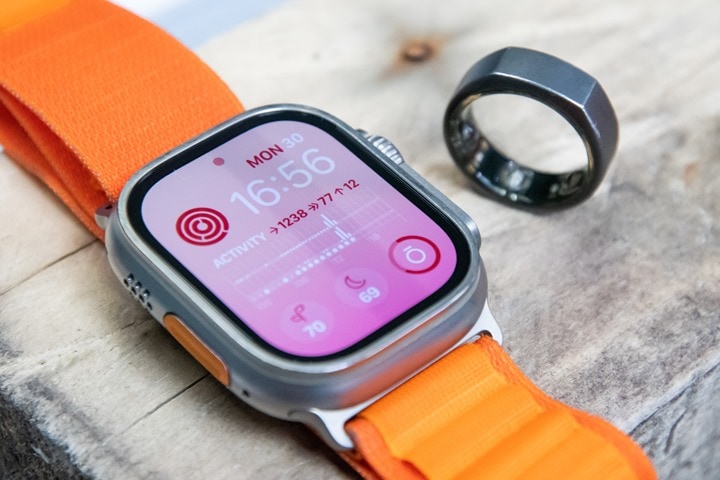
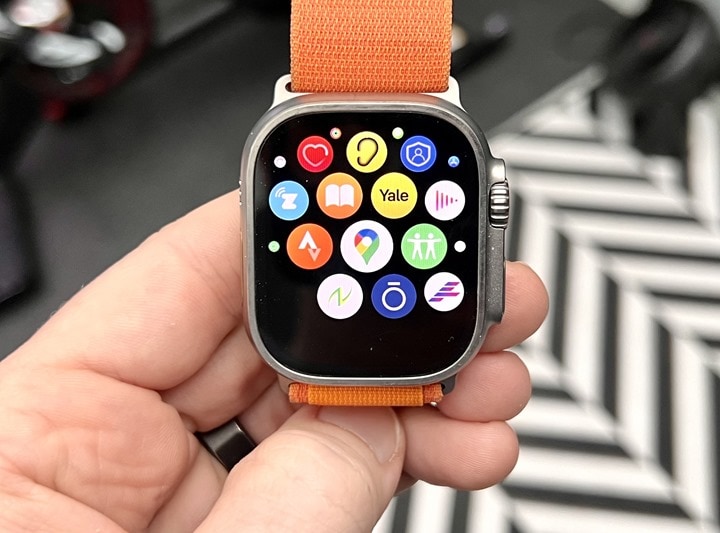
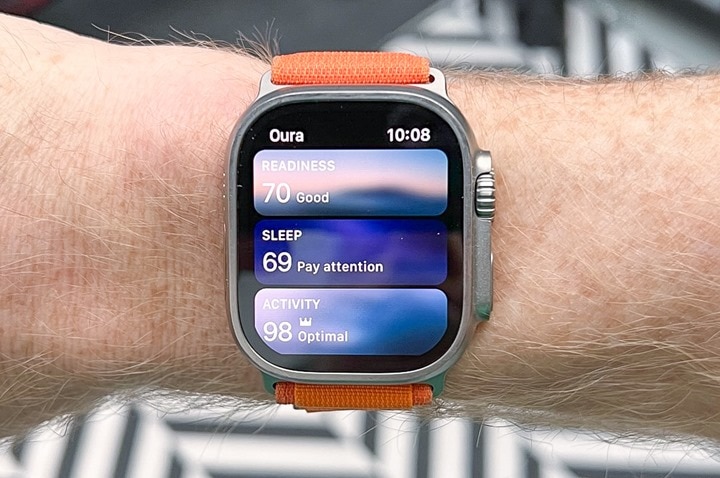
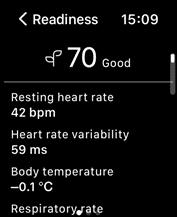
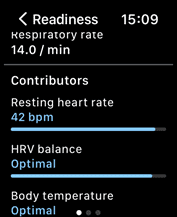
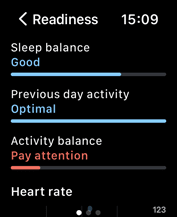
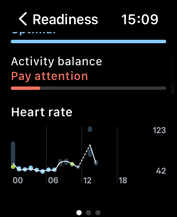

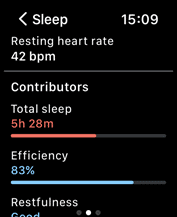
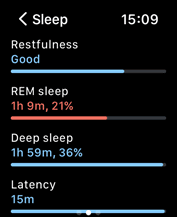
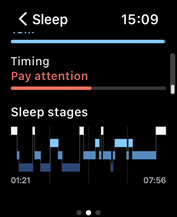
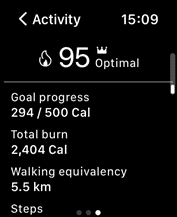
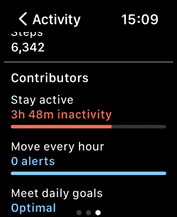
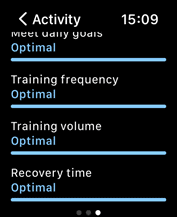
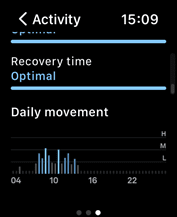
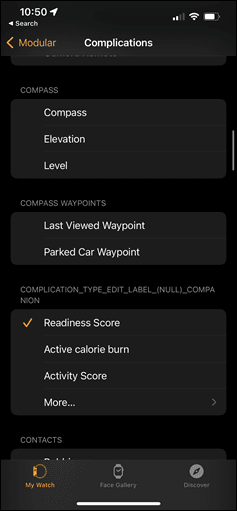
![clip_image001[4] clip_image001[4]](https://media.dcrainmaker.com/images/2023/01/clip_image0014_thumb.png)
![clip_image001[6] clip_image001[6]](https://media.dcrainmaker.com/images/2023/01/clip_image0016_thumb-2.png)


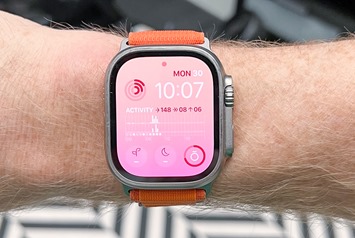
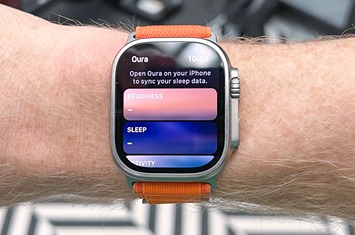





















Oh, if only Garmin could find a way to sync over the Apple Watch… That would be great. (Then again unlikely because they rather sell me some kind of Edge device with crippled LTE built-in)
“I don’t know why they aren’t showing under an ‘Oura’ header, but instead some weird string (but they seem to work just fine)”
Same to me. After restarting the watch they are now listet in the right category ‘Oura’.
When is Apple going to roll out its own answer to Oura/Whoop/Garmin Body Battery? I can get a laundry list of metrics on my Apple Watch Ultra, but Apple does nothing interesting with that data. It seems like that would kill off a laggy Oura watch app and make me stop wearing my Whoop.
David, have you had a look at the ‘Athlytic’ app on the App Store. Takes a lot of the Apple Watch / Apple Health data and creates Whoop style analysis of the data. Pretty cool.
Yes, I use Athlytic, and bluntly, I am unimpressed by its algorithm. No disrespect to the Athlytic developer, but I don’t think he has the resources for development that Whoop, Oura, Garmin, or Apple have.
Ah, that’s good to know, as I’ve not used Whoop or Oura. I assume from your reply the differences in readiness are stark and don’t really match up?
Agree. Athlytic is worthless. I wore an AWU and a Garmin Epix simultaneously for two months and kept track of both the Athlytic Recovery metric and the Garmin Training Readiness.
Neither is great but at least the TR tracked my training cycle, sleep quality and (to a lesser extent) my internal sense of well-being. Athlytic uses way fewer data points so is vulnerable to bad data and, even when working properly, is equivocal at worst and useless at worst.
yet strangely, Gary (for sure) has access to the same people that advised Oura and Whoop. His algorithm is ‘correct’ to the best of my knowledge and as good as theirs.
Whether or not the underlying data is correct is another matter entirely.
That’s fair. All I know is that I’ve been using Athlytic since I got my AWU three months ago, and my recovery score *every* day is 50% +/- 5%. There’s either something off in the way the app is calculating my recovery (algorithm, data, who knows?), or I am one consistently middling person. :)
I’m curious about the algorithm’s in other apps that interpret Apple Watch (or Health) data. Two that I am testing are Training Today and CardioBot. Training Today offers an overall score but I think it is based on HRV only. CardioBot doesn’t offer a score but does interpret some of the data.
Are there any other good apps to combine the data collected by Apple Watch?
Slow update is a common theme for all third-party Apple Watch complications – AFAIK they are limited to at most once every 15 minutes.
Serious question from an Apple Watch wearer: what do you gain from wearing both of these devices? Seems quite redundant, especially considering the very high sleep, activity, and HR tracking on the Apple Watch (as evaluated by Quantified Scientist on YouTube).
What Whoop and Oura offer is a simple way to process that data. I don’t use an Oura, but I can look at my Whoop score in the morning and get a read on my recovery with one simple number. One can quibble with that number and how it’s determined, but it’s one number. On my Apple Watch, I feel like I need to sift through lots of data to figure out anything. As I suggested above, I’m waiting for Apple to come up with its simple recovery/readiness metric that is calculated based on all that other data it is capturing.
The main benefit of the Oura ring is that you can wear it at night and it’s very small and doesn’t impact your sleep. Many find the Apple Watch too big to wear at night, and it’s easier to charge it then. Oura’s battery lasts about 5 days. Summary, Oura is a better sleep tracker, that’s the only reason to own both.
Glad you covered this. Not sure about the white background on the watchface tho ;-)
Can you share a one liner on your Yale Lock and its Apple Home integration (that’s next on my list of smart home purchases)
many thanks, keep up the good work.
It’s kinda reddish-white. Came out a bit whiter in photo than real-life.
As for Yale, overall, I like it. We’ve had them a touch over two years (on two doors for our shed). The shed and corresponding doors (including barn-door style door) are 100 years old, so sometimes there’s some weather-induced bending of the materials which occasionally throws the locks for a loop when they don’t quite line-up anymore. But I get alerted andit’s a quick fix. We had one unit randomly die about a week before warranty (the motor just made horrific sounds and didn’t turn), but was replaced under warranty for free.
Homekit integration is flawless, though, you can’t do much config from it. All config has to be done via the Yale app itself, which is mostly horrific. Thankfully I only need to touch it if the weather dorks up calibration enough.
I’ve been tempted to buy one for the DCR Cave, but feel like we’re kinda on the wave for the next slate of devices for everyone, so am holding out for a better one.
I’d buy an Oura ring in a minute, but I do not need another recurring fee added to the monthly expenses when the AW gives it to me for less (no fee and cheaper barrier to entry, in terms of watch pricing (entry level)). Nice to have, maybe, definitely not a need. If they didn’t charge a recurring fee (I know they didn’t use to) it would be my next purchase though..
I’m slightly puzzled that they’ll include the battery life in the complication but not in the Watch app itself.
Would agree…
Honestly, I just wish the darn thing would tell me when it’s dead. Or, beforehand. In theory it’s supposed to, but it never works. Ever.
I wish you could wear the Oura on your ring finger to get accurate results. When they get to that point I will definitely buy.
To be fair, you actually can. I had a long chat about this with them. Technically speaking, there’s no issues with the ring finger. And for some people (like myself), I get generally good results there in workouts (or otherwise). In part because I know which way to wear the bumps.
The reason they prefer the index finger is that it means people don’t have to worry about directionality of the bumps, because the index finger base portion tends to be ‘beefier’ than the ring finger base portion. But as long as ou know the direction/side the bumps should be on, you’re all good.
Hi Ray
In your original in depth review of the Oura Ring 3 you mentioned some features that weren’t active on product release and with no fixed timeline for when these features would become active e.g. activity tracking and Spo2.
Are all these features now released?
Phil
I am all for an update to the original reviews of Oura Ring 3 from 2021. Have the promised features be introduced? Have the buggy features from 2021 been addressed?
Would appreciate a small update paragraph too 👍🏼
it is good to use an apple watch
I have TrainingPeaks and a Apple Watch but can’t import Apple Health Metrics like sleep and HRV directly. If I get an Oura ring I can then through a different app import data into TrainingPeaks.
From what I’ve seen the Apple Watch tracks sleep better then Oura and as a everyday device I would rather wear a watch over a ring. I just wish you could directly utilize your Apple Health data in Training peaks, instead it’s either multiple devices or multiple apps. They suggest using HRV4 for HRV and some other app for sleep hours. I don’t want to wear both an Oura ring and a Apple Watch or have 4 different apps just to view all my data.
I also don’t see any great alternatives to TrainingPeaks. The multi app multi device model is very annoying.
Another vote for an update! I’m getting really tired of trying to sleep with my AWU2 or Fenix on.